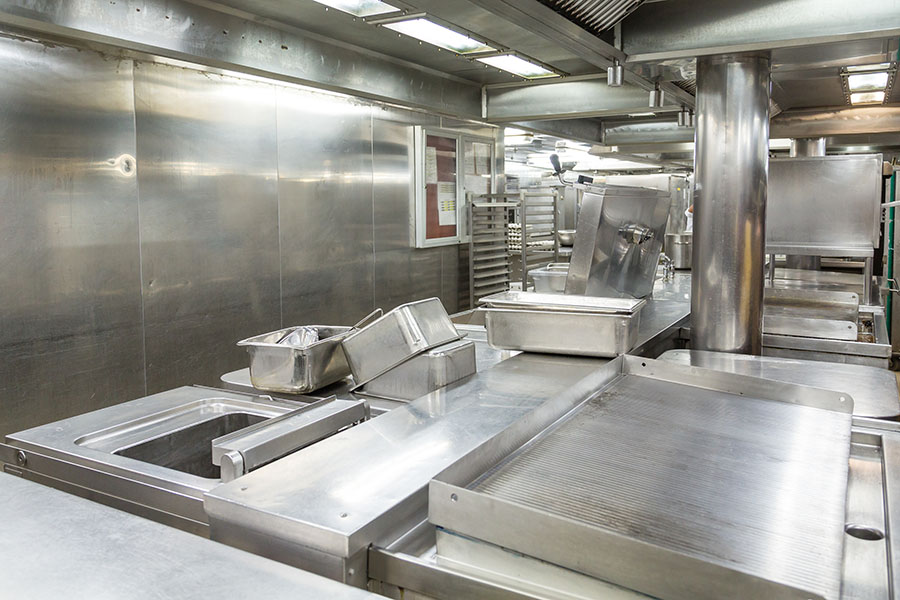The whirling world of employee benefits
John Pask says smart restaurants have long known the importance of offering employees compelling benefits. If employees feel supported and valued, then customer service and employee retention often follow in a positive direction and drive the restaurant’s overall performance, says Pask, the co-founder and managing partner at GoBenefits, a Dallas-based firm that provides insurance for restaurants across the U.S.
And this realization, he continues, has only accelerated of late.
Given the health and safety concerns COVID-19 ignited, the startling – and ever-rising – costs of medical care and the intense labor challenges blanketing the restaurant industry, employee benefits, led by health insurance, are drawing intense attention from both restaurant owners and employees alike.
“Operators come to us every day looking to offer benefits because they understand employees have a choice on where they can work and they see they need to offer benefits to recruit and retain employees,” Pask says.
Knowing the job hunters
While all large employers – defined as those with more than 50 full-time and full-time equivalent employees – must offer health coverage under the Affordable Care Act, smaller operators do not face the same mandate. Still, Clinton Wolf, senior vice president of health and insurance services with the National Restaurant Association (NRA), reminds smaller operators they are nevertheless competing in the talent pool with larger employers offering health coverage.
“You might be able to match on salary, but the large employer is offering benefits, too,” Wolf says, noting that management-level employees, in particular, frequently list competitive salary and benefits atop their priority list when job hunting.
Increasingly, though, part-timers are also seeking benefits, keenly aware of the leverage they wield in the current labor market. Pask reports an uptick in part-timers seeking health coverage as well as vision, dental and even supplemental life products.
“Offering a comprehensive package to every employee is taking on a lot more precedence these days,” Pask says. “The focus is no longer on the manager level and above.”
That reality leaves smaller employers in a notable quandary: risk losing out on talent to larger employers or investing in a health coverage program that boosts one’s profile amongst job candidates.
Understanding options
According to Wolf, many smaller restaurant operators misunderstand what’s involved in setting up a health insurance program. A good number, for example, assume they must pay 100 percent of every employee’s insurance when, in fact, the minimum is generally 50 percent per employee. Yet more, not every employee needs to enroll.
“I talk to operators all the time who say, ‘I’ve got 20 employees and can’t afford to give them all healthcare,’” Wolf says. “Once they learn that only seven of their employees would even want to enroll and that they share the costs, though, they realize health insurance is more affordable than they thought.”
Pask suggests operators survey their staff and discover how many people would be interested in enrolling in a health plan. If only a handful express interest, it’s unlikely the restaurant would meet participant requirements for a group plan.
“If you have a lot of 18 and 19-year-olds in your restaurant and a small management team, then health insurance might not be in high demand,” Pask says. “Those individuals might be looking for alternative perks or benefits beyond healthcare and competitive compensation.”
If, however, there’s greater appetite among staff members for health coverage, then investigating a group plan makes sense. Restaurants might investigate programs offered by a local chamber of commerce or professional association, such as the Restaurant & Hospitality Association (RHA) Benefit Trust managed by UnitedHealthcare. The RHA program is available to NRA member businesses with 2-99 employees in most, but not all, states.
“These programs allow employers to band together and look like a much large employer to get better rates and plan options,” Pask says.
The RHA Benefit Trust, for example, offers more than 40 different health plan designs. Pask calls such variety important given the different healthcare coverage needs and priorities employees will inevitably have.
“Much like ordering a pizza, some want anchovies and others want pepperoni,” he says. “You don’t want to offer just one plan because there’s no universal solution for everyone. Offer multiple plans and give employees a defined contribution alongside a digital platform that makes it easy for them to shop.”
Getting started
Wolf suggests operators find a broker who works with restaurants. Get a quote, he says, and make sure the required employer contribution is feasible before revealing potential options to staff.
“Find out what it’s really going to cost you and make sure that’s doable,” Wolf says, adding that purchasing employer health insurance is a business expense that will reduce one’s taxable income.
If deemed unaffordable, other potential options do exist. The NRA’s HealthiestYou virtual care program, for instance, can be purchased for $9 per month per employee. The telemedicine program enables employees to connect via phone or video with board-certified doctors to discuss symptoms, diagnoses and treatment plans with a $0 copay. The program also provides access to licensed mental health professionals and dermatologists as well as back care programs.
As a final note, Wolf reminds operators they can set up a health coverage program at any time.
“You don’t need to wait for the start of the year,” he says. “In fact, you’ll probably get more attention creating your program later in the year when fewer people are looking to get programs going.”
The perks beyond health benefits
As important as health insurance remains, other benefits can help restaurant owners attract and retain team members.
Employers can add dental and vision as well as a basic life insurance package to healthcare programs starting at about $30 a month, while some restaurants promote 401k retirement savings plans, retention bonuses and parental leave to woo talent.
Of late, financial wellness programs have become particularly en vogue, as employers provide access to financial coaching, student loan assistance, education reimbursement or emergency savings help to drive employee health, engagement and loyalty.
“People always like getting something extra,” says John Pask of GoBenefits.
Daniel P. Smith Chicago-based writer has covered business issues and best practices for a variety of trade publications, newspapers, and magazines.







